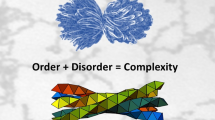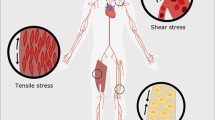Abstract
Mechanical cues may have important roles in tissue morphogenesis; progression through complex functions like differentiation may be associated with changes in cellular force generation and mechanosensing. To explore this concept, we use elastomer pillar arrays to map forces generated by neural stem cells in vitro, and identify two distinct dynamics of force generation. First, cell generated forces decrease as cells transition from a proliferative mode to differentiation, a process covering several days. This change in force generation correlates with a loss of sensitivity to substrate rigidity over a series of polydimethylsiloxane substrates. Second, neural stem cells exhibit a faster pattern of localized contractions at the cell body and outlying processes; each lasts on the order of minutes, and is not synchronized across the cell. This faster process is reminiscent of migratory behavior observed in vivo, and may be involved in controlling the motion of internal structures such as the cell nucleus. These results together provide new clues into the role of forces during development, and may lead to design principles for materials targeted for use in the central nervous system.






Similar content being viewed by others
References
Beningo, K. A., M. Dembo, I. Kaverina, J. V. Small, and Y. L. Wang. Nascent focal adhesions are responsible for the generation of strong propulsive forces in migrating fibroblasts. J. Cell Biol. 153:881–888, 2001.
Burridge, K., and M. Chrzanowska-Wodnicka. Focal adhesions, contractility, and signaling. Annu. Rev. Cell Dev. Biol. 12:463–518, 1996.
Cai, Y., N. Biais, G. Giannone, M. Tanase, G. Jiang, J. M. Hofman, C. H. Wiggins, P. Silberzan, A. Buguin, B. Ladoux, and M. P. Sheetz. Nonmuscle myosin IIA-dependent force inhibits cell spreading and drives F-actin flow. Biophys. J. 91:3907–3920, 2006.
Campos, L. S., D. P. Leone, J. B. Relvas, C. Brakebusch, R. Fassler, U. Suter, and C. Ffrench-Constant. Beta1 integrins activate a MAPK signalling pathway in neural stem cells that contributes to their maintenance. Development 131:3433–3444, 2004.
Conti, L., S. M. Pollard, T. Gorba, E. Reitano, M. Toselli, G. Biella, Y. Sun, S. Sanzone, Q. L. Ying, E. Cattaneo, and A. Smith. Niche-independent symmetrical self-renewal of a mammalian tissue stem cell. PLoS Biol. 3:e283, 2005.
Dembo, M., and Y. L. Wang. Stresses at the cell-to-substrate interface during locomotion of fibroblasts. Biophys. J. 76:2307–2316, 1999.
Doetsch, F., I. Caille, D. A. Lim, J. M. Garcia-Verdugo, and A. Alvarez-Buylla. Subventricular zone astrocytes are neural stem cells in the adult mammalian brain. Cell 97:703–716, 1999.
du Roure, O., A. Saez, A. Buguin, R. H. Austin, P. Chavrier, P. Silberzan, and B. Ladoux. Force mapping in epithelial cell migration. Proc. Natl Acad. Sci. USA 102:2390–2395, 2005.
Elkin, B. S., E. U. Azeloglu, K. D. Costa, and B. Morrison, 3rd. Mechanical heterogeneity of the rat hippocampus measured by atomic force microscope indentation. J. Neurotrauma 24:812–822, 2007.
Engler, A. J., S. Sen, H. L. Sweeney, and D. E. Discher. Matrix elasticity directs stem cell lineage specification. Cell 126:677–689, 2006.
Galbraith, C. G., and M. P. Sheetz. A micromachined device provides a new bend on fibroblast traction forces. Proc. Natl Acad. Sci. USA 94:9114–9118, 1997.
Galbraith, C. G., K. M. Yamada, and M. P. Sheetz. The relationship between force and focal complex development. J. Cell Biol. 159:695–705, 2002.
Ghassemi, S., N. Biais, K. Maniura, S. K. Wind, M. P. Sheetz, and J. Hone. Fabrication of elastomer pillar arrays with modulated stiffness for cellular force measurements. J. Vacuum Sci. Technol. B 26:2549–2553, 2008.
Ghibaudo, M., A. Saez, L. Trichet, A. Xayaphoummine, J. Browaeys, P. Silberzan, A. Buguin, and B. Ladoux. Traction forces and rigidity sensing regulate cell functions. Soft Matter 4:1836–1843, 2008.
Giannone, G., B. J. Dubin-Thaler, H. G. Dobereiner, N. Kieffer, A. R. Bresnick, and M. P. Sheetz. Periodic lamellipodial contractions correlate with rearward actin waves. Cell 116:431–443, 2004.
Gotz, M., and W. B. Huttner. The cell biology of neurogenesis. Nat. Rev. Mol. Cell Biol. 6:777–788, 2005.
Higginbotham, H. R., and J. G. Gleeson. The centrosome in neuronal development. Trends Neurosci. 30:276–283, 2007.
Lathia, J. D., B. Patton, D. M. Eckley, T. Magnus, M. R. Mughal, T. Sasaki, M. A. Caldwell, M. S. Rao, M. P. Mattson, and C. Ffrench-Constant. Patterns of laminins and integrins in the embryonic ventricular zone of the CNS. J. Comp. Neurol. 505:630–643, 2007.
Leone, D. P., J. B. Relvas, L. S. Campos, S. Hemmi, C. Brakebusch, R. Fassler, C. Ffrench-Constant, and U. Suter. Regulation of neural progenitor proliferation and survival by beta1 integrins. J. Cell Sci. 118:2589–2599, 2005.
Lim, D. A., and A. Alvarez-Buylla. Interaction between astrocytes and adult subventricular zone precursors stimulates neurogenesis. Proc. Natl Acad. Sci. USA 96:7526–7531, 1999.
Lin, Y.-W., C.-M. Cheng, P. R. LeDuc, and C.-C. Chen. Understanding sensory nerve mechanotransduction through localized elastomeric matrix control. PLoS ONE 4:e4293, 2009.
Mercier, F., J. T. Kitasako, and G. I. Hatton. Anatomy of the brain neurogenic zones revisited: fractones and the fibroblast/macrophage network. J. Comp. Neurol. 451:170–188, 2002.
Palmer, T. D., E. A. Markakis, A. R. Willhoite, F. Safar, and F. H. Gage. Fibroblast growth factor-2 activates a latent neurogenic program in neural stem cells from diverse regions of the adult CNS. J. Neurosci. 19:8487–8497, 1999.
Ridley, A. J., M. A. Schwartz, K. Burridge, R. A. Firtel, M. H. Ginsberg, G. Borisy, J. T. Parsons, and A. R. Horwitz. Cell migration: integrating signals from front to back. Science 302:1704–1709, 2003.
Saez, A., A. Buguin, P. Silberzan, and B. Ladoux. Is the mechanical activity of epithelial cells controlled by deformations or forces? Biophys. J. 89:L52–L54, 2005.
Saha, K., A. J. Keung, E. F. Irwin, Y. Li, L. Little, D. V. Schaffer, and K. E. Healy. Substrate modulus directs neural stem cell behavior. Biophys. J. 95:4426–4438, 2008.
Sbalzarini, I. F., and P. Koumoutsakos. Feature point tracking and trajectory analysis for video imaging in cell biology. J. Struct. Biol. 151:182–195, 2005.
Schaar, B. T., and S. K. McConnell. Cytoskeletal coordination during neuronal migration. Proc. Natl Acad. Sci. USA 102:13652–13657, 2005.
Tan, J. L., J. Tien, D. M. Pirone, D. S. Gray, K. Bhadriraju, and C. S. Chen. Cells lying on a bed of microneedles: an approach to isolate mechanical force. Proc. Natl Acad. Sci. USA 100:1484–1489, 2003.
Tsai, J., and L. Kam. Rigidity-dependent cross talk between integrin and cadherin signaling. Biophys. J. 96:L39–L41, 2009.
Tsai, J. W., K. H. Bremner, and R. B. Vallee. Dual subcellular roles for LIS1 and dynein in radial neuronal migration in live brain tissue. Nat. Neurosci. 10:970–979, 2007.
Tsai, J. W., Y. Chen, A. R. Kriegstein, and R. B. Vallee. LIS1 RNA interference blocks neural stem cell division, morphogenesis, and motility at multiple stages. J. Cell Biol. 170:935–945, 2005.
Ulrich, T. A., E. M. de Juan Pardo, and S. Kumar. The mechanical rigidity of the extracellular matrix regulates the structure, motility, and proliferation of glioma cells. Cancer Res. 69:4167–4174, 2009.
Wichterle, H., J. M. Garcia-Verdugo, and A. Alvarez-Buylla. Direct evidence for homotypic, glia-independent neuronal migration. Neuron 18:779–791, 1997.
Wozniak, M. A., R. Desai, P. A. Solski, C. J. Der, and P. J. Keely. ROCK-generated contractility regulates breast epithelial cell differentiation in response to the physical properties of a three-dimensional collagen matrix. J. Cell Biol. 163:583–595, 2003.
Zajac, A. L., and D. E. Discher. Cell differentiation through tissue elasticity-coupled, myosin-driven remodeling. Curr. Opin. Cell Biol. 20:609–615, 2008.
Acknowledgments
This work was funded by the National Institutes of Health through the NIH Roadmap for Medical Research (PN2 EY016586).
Author information
Authors and Affiliations
Corresponding author
Electronic supplementary material
Below is the link to the electronic supplementary material.
Supplementary Figure 1
Pulsatile nuclear migration by radial-glia-like NSCs in vitro. The position of the nucleus in each frame was determined by fitting a oval to the cell body; the centroid of this structure is indicated by the green dot in each frame. The bottom frame compares average force generation under the nucleus and nucleus position as a function of time (AVI 4905 kb)
Application of blebbstatin to cells in expansion media induces rapid changes in morphology. Corresponding effects on nuclear migration are quantified in Fig. 5D, E (AVI 3787 kb)
Supplementary Figure 3
Cells differentiated from SVZ-NSCs were present as clusters migrating over each other in a pulsate mode, resembling “chain migration” of neuroblasts in the SVZ stem cell niche (AVI 8701 kb)
Supplementary Figure 4
Detail of molecular architecture shown in Fig. 4a, 1 DIV. µPAs were coated with fluorescently-labeled laminin (blue). The µPA array is the standard dimensions of 1 µm diameter, 2 µm center-to-center spacing, 7 µm height; the field of view of this image measures 133 µm across. Actin cytoskeleton and cell nuclei were stained with phalloidin (green) and DAPI (red), respectively. Image stacks were collected in standard epifluorescence mode then deconvoluted and projected onto the indicated visualization planes using standard image processing software (PDF 106 kb)
Supplementary Figure 5
Transient, multisite force generation by NSCs in culture. Each time series was collected at 30 s intervals (showed at 1-min interval), covering a 10-min observation period (AVI 4935 kb)
Rights and permissions
About this article
Cite this article
Shi, P., Shen, K., Ghassemi, S. et al. Dynamic Force Generation by Neural Stem Cells. Cel. Mol. Bioeng. 2, 464–474 (2009). https://doi.org/10.1007/s12195-009-0097-z
Received:
Accepted:
Published:
Issue Date:
DOI: https://doi.org/10.1007/s12195-009-0097-z




